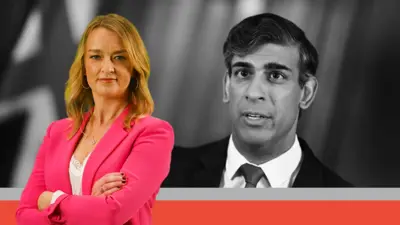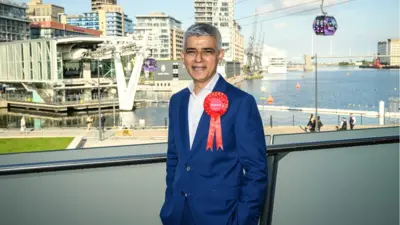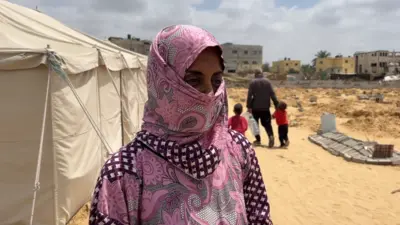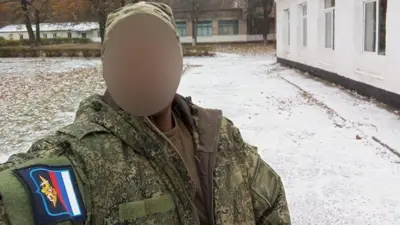We've updated our Privacy and Cookies Policy
We've made some important changes to our Privacy and Cookies Policy and we want you to know what this means for you and your data.
Dominic Cummings: Fact-checking the row
- By Reality Check team
- BBC News
Image source, Getty Images
Durham Police have investigated Dominic Cummings' relocation of his family to Durham during lockdown. They found that when he subsequently drove to Barnard Castle to check his eyesight "there might have been a minor breach" of the law.
Mr Cummings has maintained he behaved reasonably and legally throughout the episode.
1. Why did Dominic Cummings drive his family 25 miles to Barnard Castle?
Mr Cummings drove his family to Durham to stay at his father's farm on the evening of 27 March, after his wife fell ill and suspecting that he might soon fall ill. The next day he developed coronavirus symptoms and was self-isolating.
By 12 April Mr Cummings was cleared to return to work and wanted to travel back to London. He decided to go for a drive first to see whether he could drive safely.
"My wife was very worried particularly given my eyesight seemed to have been affected by the disease. She did not want to risk a nearly 300-mile drive with our child given how ill I had been."
He explained that after parking on the outskirts of Barnard Castle town, he felt sick and the family walked "about 10-15m" and sat by the riverbank for about 15 minutes.
Image source, Reuters
Durham Police have now investigated and said that if an officer had stopped Mr Cummings on the way to or from the town he would have been told to return to his father's property. If he had agreed no further action would have been taken.
The police view is that it might have been a minor breach of the regulations because Mr Cummings maintained social distancing - ie stayed more than 2m away from anyone.
According to Adam King, a senior criminal barrister at QEB Hollis Whiteman, "the use of the word 'might' makes clear that it's not the police's ultimate decision whether to determine reasonable excuse, that's for the courts."
"However, if the police's view was that it was a reasonable excuse you would expect them to say that, as they do in relation to the drive to Durham," he says.
Many people have questioned whether it was dangerous to test his ability to drive with his wife and child in the car and said it was a breach of the Highway Code and motoring laws. Others have pointed out that it took place on his wife's birthday.
Cabinet Minister Michael Gove earlier defended the trip by saying it was "consistent with the guidelines". He also referred to a reason that Mr Cummings did not during his press conference.
"It was part of the National Police Chiefs Council (NPCC) guidance that you could drive at that time in order to take exercise as well," Mr Gove said.
But the NPCC guidance referred to by Mr Gove - which was publicised in mid-April - says "driving for a prolonged period with only brief exercise" was not likely to be reasonable.
2. Was the initial relocation to Durham a breach of the guidelines if not the law?
When Mr Cummings originally took his family to Durham to stay at a cottage on the family farm, the police view was that the law wasn't broken.
"Durham Constabulary does not consider that by locating himself at his father's premises, Mr Cummings committed an offence contrary to regulation 6 of the Health Protection (Coronavirus, Restrictions) (England) Regulations 2020."
The lockdown has been underpinned by both the law and various sets of government guidelines. The police only deal with the law.
That says: "During the emergency period, no person may leave the place where they are living without reasonable excuse." The law gives examples of reasonable excuses such as obtaining necessities, exercise, medical need and travelling to work. But the list is not exhaustive which means there can be reasonable excuses that are not on it.
There are lockdown "rules" that are in the guidelines but not in the law.
When Mr Cummings drove his family to Durham he suspected his wife had coronavirus and the whole family should have been remaining in their home and self-isolating, according to the guidelines.
But he said he feared both him and his wife becoming incapacitated and unable to look after their four-year-old. He has cited a section in the advice that says: "We are aware that not all these measures will be possible if you are living with children, but keep following this guidance to the best of your ability."
3. Should Mr Cummings have driven to a hospital to pick up his wife and child while he was sick with Covid-19 symptoms?
On 2 April, Mr Cummings' son was taken to hospital in an ambulance after he "threw up and had a bad fever".
The next day his son "had recovered and seemed back to normal" and Mr Cummings said he drove to the hospital to pick up his family as "there were no taxis".
The night before Mr Cummings was so ill he "could barely stand up", he said, and his wife's Spectator piece described how he had a high fever and muscle spasms in his legs for 10 days.
As he had coronavirus symptoms like fever, Mr Cummings was supposed to be isolating. On this car journey, Mr Cummings said he did not get out or have contact with any strangers.
But were other forms of transport available?
There were taxi firms who were taking patients home from hospital in Durham at that point. However, the government guidance told self-isolating people: "Do not use public transport or taxis."
But in March and April, the North East Ambulance Service (NEAS) policy was to offer transport for patients leaving hospital with suspected Covid-19 but without a confirmed test result.
Mr Cummings confirmed that his son was tested upon leaving the hospital, but did not receive his negative result until "a few days later". So an ambulance could have taken them home.
A spokesperson for Durham and Darlington NHS Foundation Trust, which runs nine hospitals and two accident and emergency units in the area, told the BBC they "could arrange ambulance transport via North East Ambulance Service" in early April.
4. Did Dominic Cummings return to work on 27 March while suspecting his wife might have coronavirus?
Mr Cummings was seen running out of 10 Downing Street on 27 March. His wife, Mary Wakefield, in an article for the Spectator magazine about having the virus, wrote: "My husband did rush home to look after me."
In his press conference in the Downing Street rose garden, Mr Cummings said his wife was feeling a bit better after a couple of hours. "There were many critical things at work and she urged me to return in the afternoon and I did."
Public Health England (PHE) guidance, published on 12 March, stated that along with the infected individual "all other household members who remain well must stay at home and not leave the house for 14 days".
Mr Cummings returned home again in the evening and spoke with his wife.
"She was ill. She might have Covid although she did not have a cough or a fever."
5. Why did Dominic Cummings say he had written about the threat of coronaviruses last year?
In his prepared statement at the recent press conference Mr Cummings said: "For years I have warned of the dangers of pandemics. Last year I wrote about the possible threat from coronaviruses and the urgent need for planning."
Journalists quickly found a blog by the adviser from last year that mentioned SARS a single time. But it was soon established by a bit of internet sleuthing that the blog had been edited to contain this coronavirus reference on the evening of 14 April this year, the day Mr Cummings returned to work from Durham. When originally published it had contained just a link to another article.
Mr Cummings has not revealed why he made the edit when he did.
Additional reporting by Oliver Barnes, Chris Morris and Tom Edgington
- A SIMPLE GUIDE: How do I protect myself?
- AVOIDING CONTACT: The rules on self-isolation and exercise
- WHAT WE DON'T KNOW How to understand the death toll
- TESTING: Can I get tested for coronavirus?
- LOOK-UP TOOL: Check cases in your area
Dominic Cummings' Durham visit a 'challenge' for local MPs
County Durham's three Tory MPs need to acknowledge people's anger while staying in the PM's good books.
Top Stories
Features & Analysis
Most read
Content is not available








